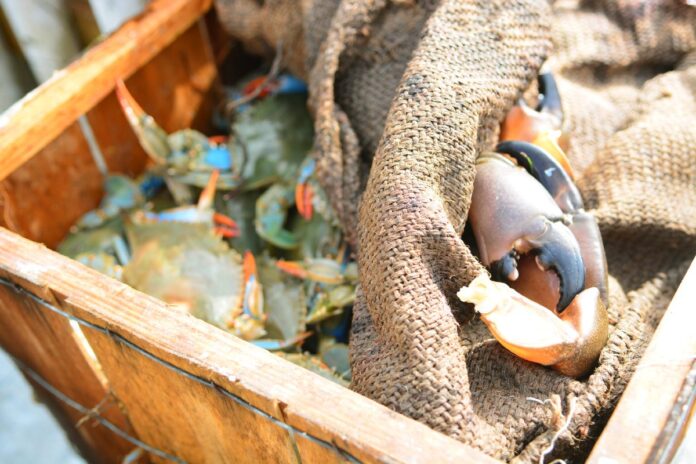HARLINGEN — Abandoned and derelict, crab traps are killers.
That’s why Texas Parks and Wildlife Department along with coastal conservation groups are preparing for the annual recovery of crab traps from Feb. 15-24. Any trap found in gulf or bay waters will be removed and confiscated.
Participants this year are the Coastal Conservation Association Texas, Coastal Bend Bays and Estuaries Program, Galveston Bay Foundation and the U.S. Fish and Wildlife Service.
Over 17 years, 35,000 of these derelict traps have been removed from Texas coastal waters.
“They’re abandoned but they’re still fishing because they’re still in the water, and there’s the potential for catching and killing crabs or fish or whatever gets in there, gets trapped in there, and slowly starves to death,” said Jason Ferguson, a natural resource specialist with TPWD. “There’s fish that get trapped in there and they’ll die and then they’ll rot and then they’ll attract more fish and crabs and then they’ll die and rot, and it’s a never-ending cycle.”
In the Lower Laguna Madre there are two drop-off points where people just out fishing or volunteers helping remove traps can drop off recovered traps. Those are the boat ramp at Adolph Thomae Jr. County Park and the county ramp at Port Mansfield.
“Those are the two main drop-off points and then you can also call our office if you’re out there fishing and you’ve picked one up,” Ferguson said. “Just give us a heads-up that you’re dropping one off either at Adolph Thomae or Port Mansfield, and we can make sure we have one of our guys go up there and pick it up. That way we can get an accurate number of how many were found.”
It’s not just crabs and fish that can be vulnerable to abandoned traps. Birds can be caught, too, especially on the spoil islands which support nesting colonies.
“Aside from the fact that they can be harmful to boaters, they could be harmful to wildlife, they can climb up in there and not be able to get out,” said Stephanie Bilodeau, a biologist with the Coastal Bend Bays and Estuaries Program. “Or they can get tangled up in the line where the buoys are attached. It just becomes trash once they wash up on the islands.”
Any traps left in bays — including traps tied to docks — will be assumed abandoned and considered “litter” under state law, TPWD says. This allows volunteers to legally remove any crab traps they find.
To participate, volunteers with boats can pick up free tarps, gloves, trap hooks and additional information at their local TPWD Coastal Fisheries field stations. The closest one in the Valley is in Brownsville at 95 Fish Hatchery Road.
TPWD requests that volunteers who remove traps record and submit information about the number of traps they collect as well as documenting any sightings of diamondback terrapins.
“When we first started, we got a lot,” Ferguson said. “The first couple of years we had a lot and after that it’s gotten less and less — thankfully — which is good, it’s the whole idea of the program.”
Lower Laguna Madre
Adolph Thomae Jr. County Park — Non-facilitated trap drop-off site
Port Mansfield Navigation District Ramp — Non-facilitated trap drop-off site
Local TPWD coordinator Jason Ferguson 956-350-4490





